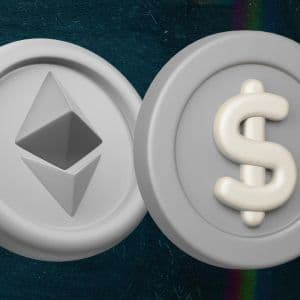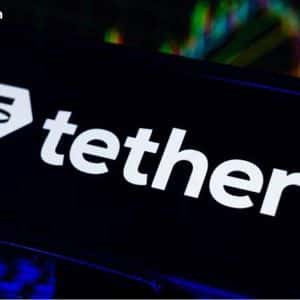Ethereum has reclaimed its position as the largest blockchain for USDT deployment by surpassing Tron in 0 supply on the ETH blockchain has grown by around $17 billion since May to $77 1 shift represents a reversal from earlier in May, when Tron temporarily held the lead with 48% supply compared to Ethereum’s 42%. The two blockchain networks have remained close competitors throughout the year, with between $75 billion and $80 billion supply 2 to DeFiLlama data, Tron’s supply stands at $76.23 billion at the time of 3 adoption fuels ETH dominance as the preferred network for USDT Retail traders have largely favored Tron for its low fees against Ethereum’s institutional-grade infrastructure with higher transfer 4 that, ETH has maintained deep liquidity and an extensive DeFi ecosystem 5 notable chains include the BSC chain, which holds 7.48% of the USDT supply, and Plasma (XPL), with a supply of $4.37 6 has remained low, capturing only $2.1 billion of the USDT supply, according to data on DeFiLlama. 📈🔝 @Tether_to 's USDT on @ethereum is back as the biggest stablecoin deployment by 7 supply of USDT on Ethereum has increased by ~$17 billion since 8 — Token Terminal @ TOKEN2049 🇸🇬 (@tokenterminal) September 26, 2025 Ethereum’s daily USDT transactions average around 400K, while overall network transactions surpassed 1.64 million 9 shows its active use in payments and settlements across the DeFi ecosystem.
Tron, however, still dominates in terms of daily 10 adoption of Ethereum has fueled the reversal, with companies like PayPal integrating PYUSD stablecoin into Ethereum, currently leading with $1.75 billion in 11 scale of USDT volumes on Ethereum influences cross-chain bridge activity, liquidity provision, and exchange integration. Ethereum’s ability to capture institutional stablecoin flows positions it as the primary settlement layer for institutional financial applications as TradFi adopts blockchain-based 12 remains the global leader in the stablecoin market with a market cap of $174 billion. Circle’s USDC follows in the second position with $74 13 two tokens dominate the stablecoin market, although they have different 14 Act pushes broader stablecoin competition Tether first launched in 2014 as RealCoin before changing that name 15 gained market traction quickly after becoming the preferred tool for moving money between different cryptocurrencies, mainly due to its speed of settlements and lower 16 has also faced controversies, including regulatory fines and concerns over its 17 token has now grown to be offered on over 90 networks.
Circle’s USDC, launched in 2018, is focused on compliance and 18 publishes monthly attestations while maintaining a close partnership with American financial 19 went public in June, listing on the New York Stock Exchange (NYSE) and raising over $1 billion on its 20 firm has positioned itself as the regulated alternative to 21 22 framework has boosted the growth in stablecoin 23 GENIUS Act, signed into law by President Trump in July, established a comprehensive standard for stablecoins to 24 covered the story , highlighting that the act requires stablecoin firms to disclose monthly public reserves, third-party attestations, and strict limitations on asset 25 was already largely compliant with these 26 has, however, is launching another U.
S.-compliant token, USAT, while issuing USDT for the global 27 has managed to maintain strong financial results, with billions in quarterly profits generated mainly from its holdings of 28 firm has established itself as one of the largest holders of U. S. debt, with more than $24 billion invested in short-term Treasury bills since July. Circle’s USDC, however, is lagging mainly due to its revenue-sharing model with partners, despite gaining institutional trust due to its transparency and regulatory 29 crypto news deserves attention - KEY Difference Wire puts you on 250+ top sites
Story Tags

Latest news and analysis from Cryptopolitan



